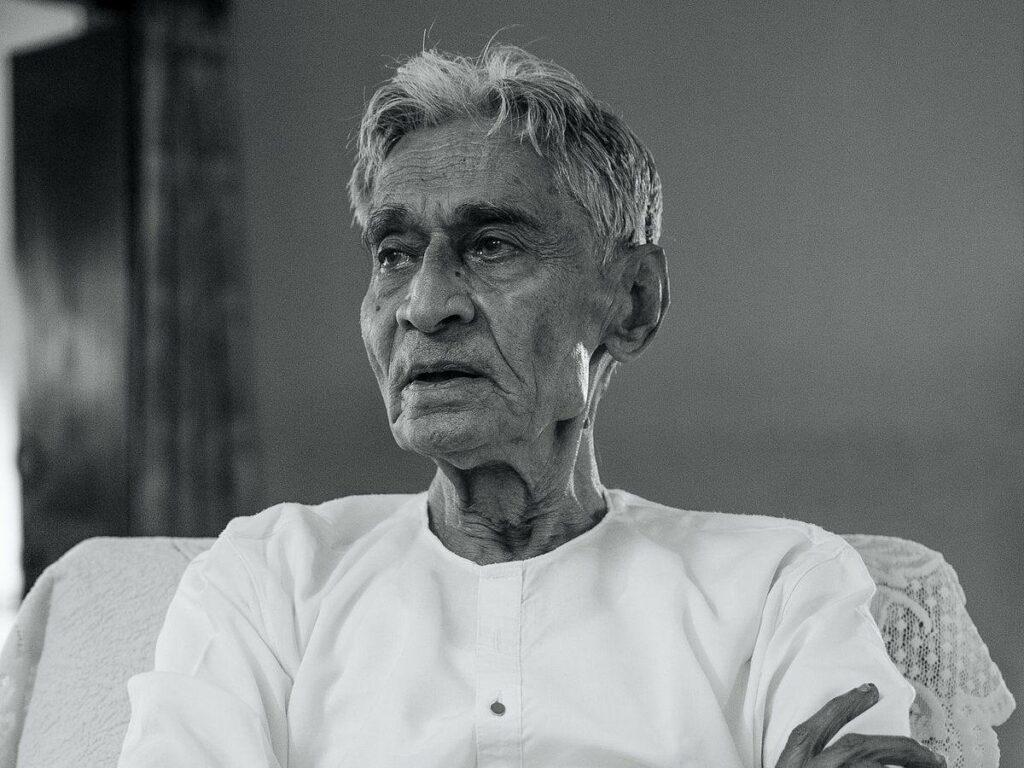Five years ago this day, Indian film industry lost a legend. Credited with some of the most notable works of the black and white era, VK Murthy (November 26, 1923 – April 7, 2014) lensed some of the finest works of Hindi cinema. His contribution to films is unique and unparalleled.
The Mysore-born and bred cinematographer harboured the desire to work in films from an early age of 10. It was a ‘passport to fame,’ Murthy recalled in one of his interviews.
After a diploma in cinematography from S.J. Polytechnic (where he was first refused admission) in Bangalore, he moved to Mumbai in his early 20s.
In a prolific 40-year career, Murthy worked in over 35 films and with some of the most respected names in the industry.
He started out as a fourth assistant in his first film Maharana Pratap but quickly worked his way up to becoming the first assistant. Later, he went on to assist noted cinematographer of the time Fali Mistry, for four years.
Murthy’s detailed, intricate style would soon become a benchmark for his successors.
A master of shadows and silhouettes, Murthy’s most memorable works were with the iconic Guru Dutt, who first spotted his talent on the sets of Baazi (1951). This was Dutt’s first film as a director. Murthy worked as an assistant cameraman to V. Ratra on the film. While Dutt was filming a song, Murthy went up to him with a suggestion. The interaction spawned a bond, personally and professionally, that would continue until Dutt’s last film.
The duo went on to collaborate on Jaal (1952), Aar Paar (1954), Mr. and Mrs. 55 (1955), C.I.D. (1956), Pyaasa (1957), Kaagaz Ke Phool (1959), Chaudhvi Ka Chand (1960), Sahib Bibi Aur Ghulam (1962).
Except Baazi, VK Murthy worked on all Dutt’s films as his cinematographer. He shot India’s first cinemascope film Kaagaz Ke Phool in 1959. Kaagaz Ke Phool and Pyaasa are on TIME magazine’s ‘all-time 100 best movies’ list. These classics wouldn’t have been what they were without the masterly touch of the master lensman. They left several unfinished projects before Dutt’s early demise in 1964. After his death, Murthy mostly worked with Pramod Chakravorty (Dutt’s one-time assistant) from 1964 (Ziddi) to 1992 (Deedar).
He also worked with Kamal Amrohi on the classic Pakeezah (1972) and Razia Sultan (1983).
Murthy successfully collaborated with Shyam Benegal on his iconic teleserial Bharat Ek Khoj (1988) for Doordarshan.
Renowned director-cinematographer and 6 time-National Award winner Govind Nihalani (Aakrosh, Ardh Satya, Tamas) credits all that he is today to ‘Murthysaab’. Nihalani started out as an assistant to him and shot the classic TV series Tamas (1987) with him.
VK Murthy didn’t do much work down south, his homeground. In 1993, he worked with noted producer-director Rajendra Singh Babu on acclaimed Kannada film Hoova Hannu. He was 74 then.
For all his iconic and influential works, Murthysaab’s contribution to cinema was recognised much later. He was conferred the Dadasaheb Phalke Award in 2008, the first technician/cinematographer to have won the honor.
He fearlessly experimented with different techniques of lighting. The ‘beam shot’ in waqt ne kiya kya haseen sitam from Kaagaz Ke Phool is considered a ground-breaking moment for our cinema.
I’ll leave you with this melodious composition, the filming of which was another classic moment in the history of Indian cinema. (One of the biggest hits of the 60s, Chaudavin ka Chand had only its title track shot in colour).





1 thought on “V.K. Murthy: A Tribute to the Iconic Cinematographer”
Comments are closed.